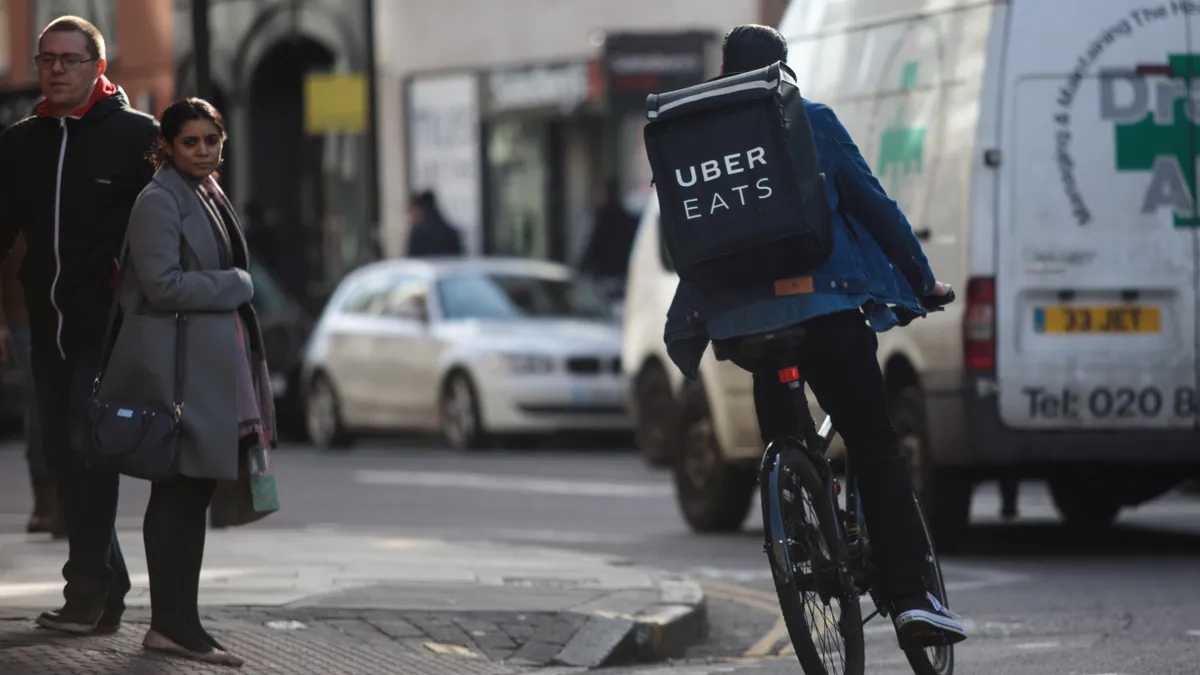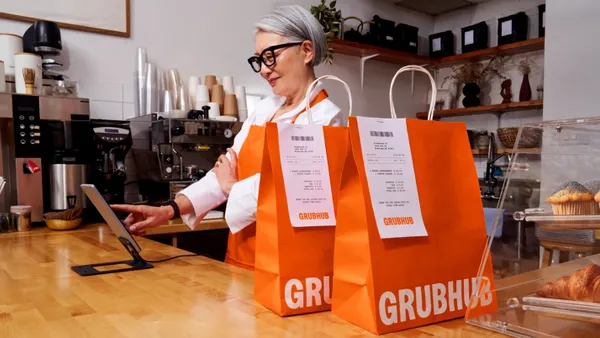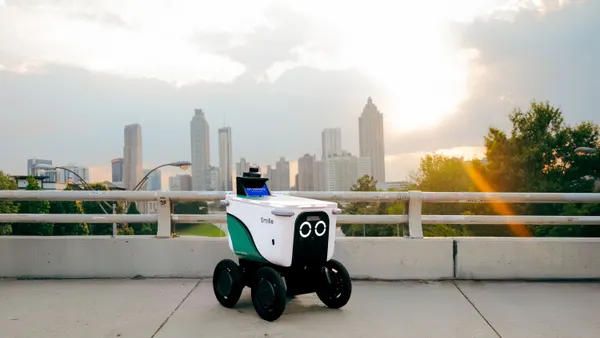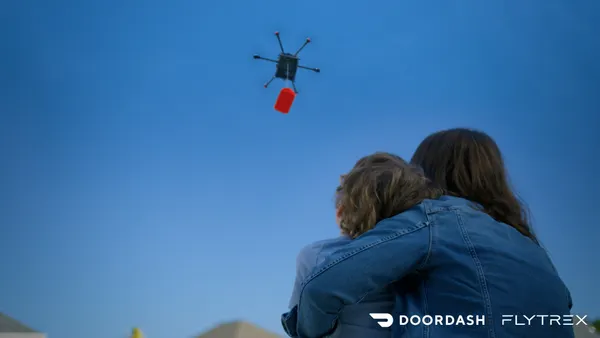Dive Brief:
- Uber Eats' core restaurant delivery business was profitable on an adjusted EBITDA basis for the first time ever in Q3 2021, Uber CFO Nelson Chai said during the company's latest earnings call Thursday.
- Its overall delivery adjusted EBITDA margin as a percentage of delivery gross bookings also approached breakeven compared to negative 1.2% in the second quarter, according to the company's earnings release.
- Uber Eats is reinvesting this profitability into new verticals, Chai said. The company, for example, launched a channel focused on baby and kids through a partnership with Bed Bath & Beyond and BuyBuy Baby, as well as niche brands like Yumi and Lalo.
Dive Insight:
While restaurant food delivery reached an important milestone for Uber Eats last quarter, it is still coming up against some strong headwinds with food delivery commission caps in the U.S. and Canada, higher than normal driver incentive spend in some markets and incremental costs from worker classification in the U.K, Chai said. The caps and U.K. worker costs led to a $150 million to $200 million setback on its Q3 EBITDA.
These challenges, however, don't appear to be slowing down its delivery business.
"We expect continued strong growth in the years ahead, from both our core restaurant delivery business and our emerging new verticals business," Uber CEO Dara Khrosrowshahi, said during Thursday's earnings call. "As cities reopen, we're seeing evidence that delivery complements dine-in, as third-party food delivery has continued to grow even a[s] seated dining trends have fully recovered to 2019 levels."
In a continuation of its delivery diversification, Uber Eats announced Monday it will also offer robotic delivery service through a partnership with Serve Robotics starting next year in Los Angeles. Serve, which was spun off from Postmates after Uber's acquisition, has already completed tens of thousands of contactless deliveries in major U.S. cities. Prior to its Uber acquisition, Postmates rolled out the robots in 2019. The bots can carry 50 pounds and travel 30 miles. Other third-party aggregators, including Grubhub, have been testing robotic delivery, which can make short distance and small orders more profitable since they don't require couriers.
Outside of food delivery, the company is focused on grocery, convenience and alcohol in its marketplace, which will be supported by the addition of Cornershop and Drizly to its platform, Khrosrowshahi said, adding that it is using Uber Direct to fulfill demand directly from retailer's white-label products that use Uber's delivery technology. Uber Eats' ability to use profits from restaurant delivery to add new verticals will help it become more competitive against DoorDash, which has been making major plays to expand into alcohol, grocery, convenience stores and other areas of retail.
Uber Eats has also been expanding its resources for restaurants. During the quarter, it added mobile ordering for pickup where customers can order and pay in-app from select restaurants and pick up their meal. The program is being piloted at Toronto Pearson Airport and is expected to roll out to U.S. airports in the coming months, according to the earnings release. Earlier this year it added a searchable map function for pickup orders that also allows customers to use emojis to search for a type of food. In September, the company deployed a tiered pricing structure with 15%, 25% and 30% fee plans.














